Abstract
The antigenic specificities of cutaneous anaphylactic reactions in guinea-pigs passively sensitized by intravenous administration of rabbit anti-benzylpenicillin (PG) sera were studied. Haptenic specificity of these reactions was found to be directed to the benzylpenicilloyl (BPO) haptenic group, and no evidence of specificity toward other possible haptenic determinants related to PG (i.e. benzylpenicillenic acid and D-penicillamine groups) was found. Specificity was mainly for the α-diastereoisomeric-BPO group, but also to one or more of the other possible diastereoisomers of BPO. Data were obtained which can be best interpreted as indicating that the BPO-specific antibodies manifest immunological specificity also for structural areas of the immunizing carrier protein (carrier specificity).
Full text
PDF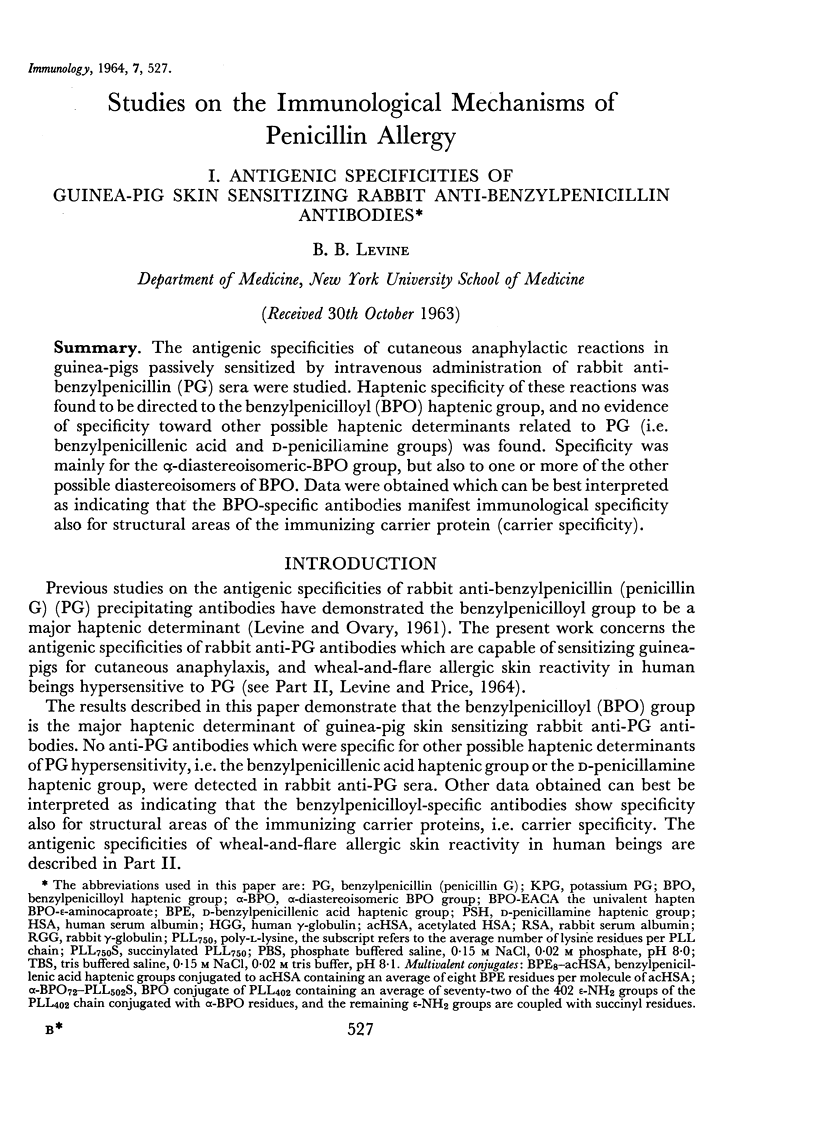
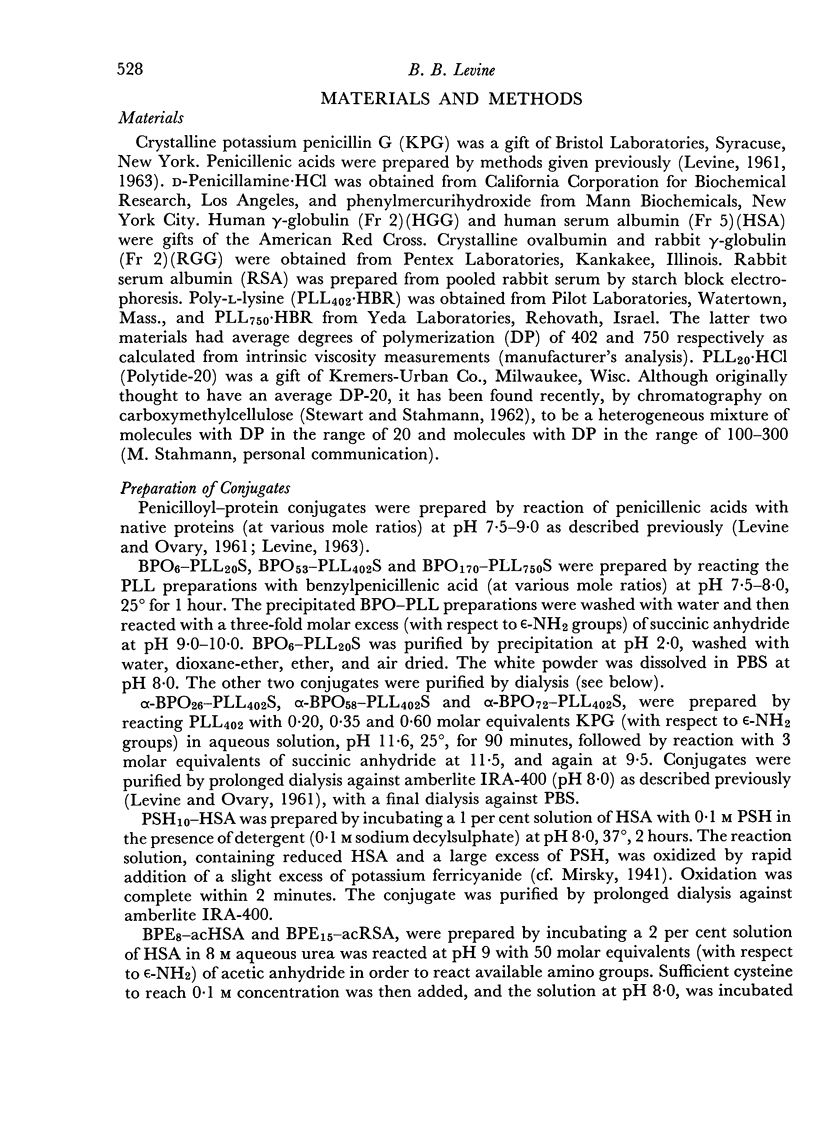

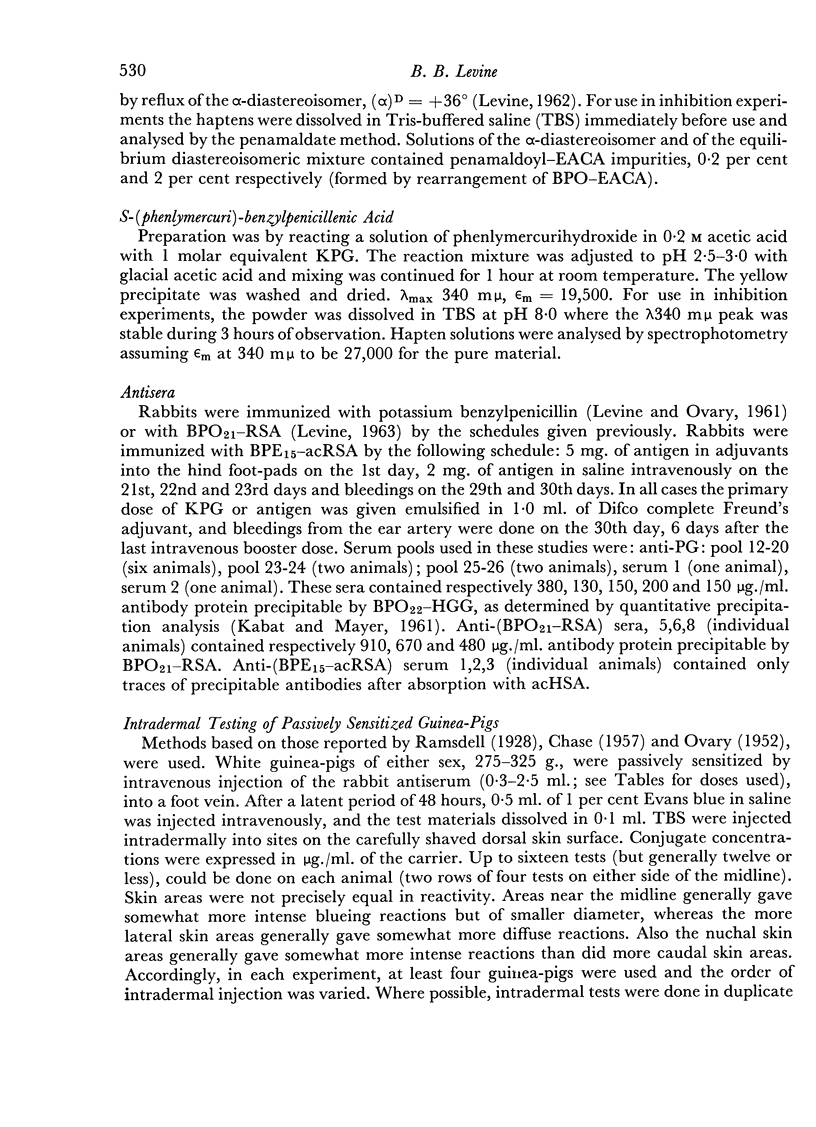
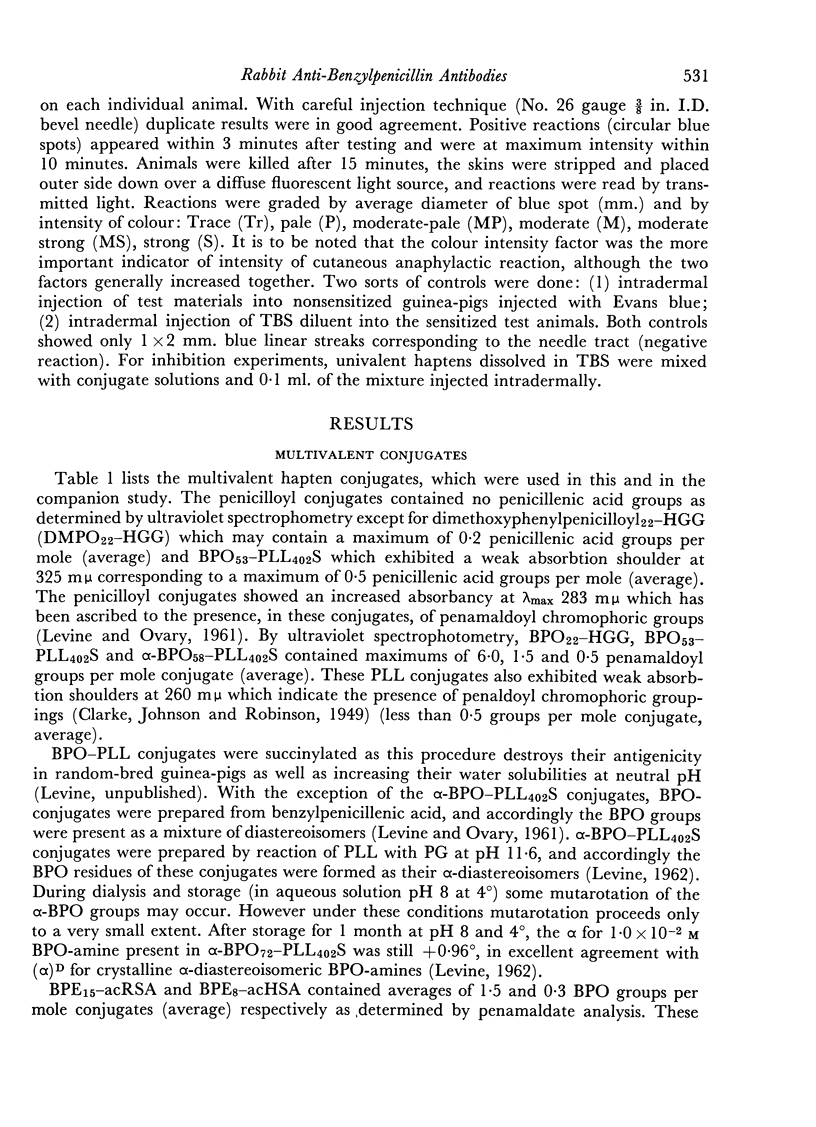
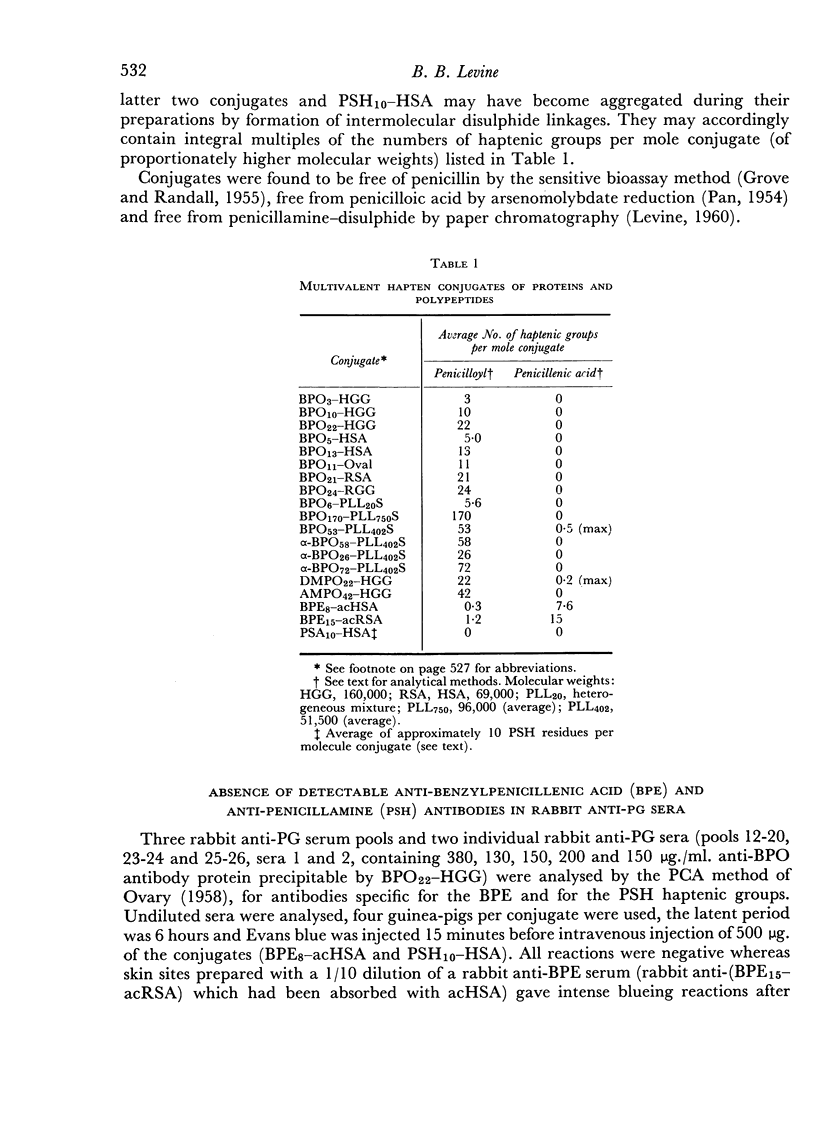
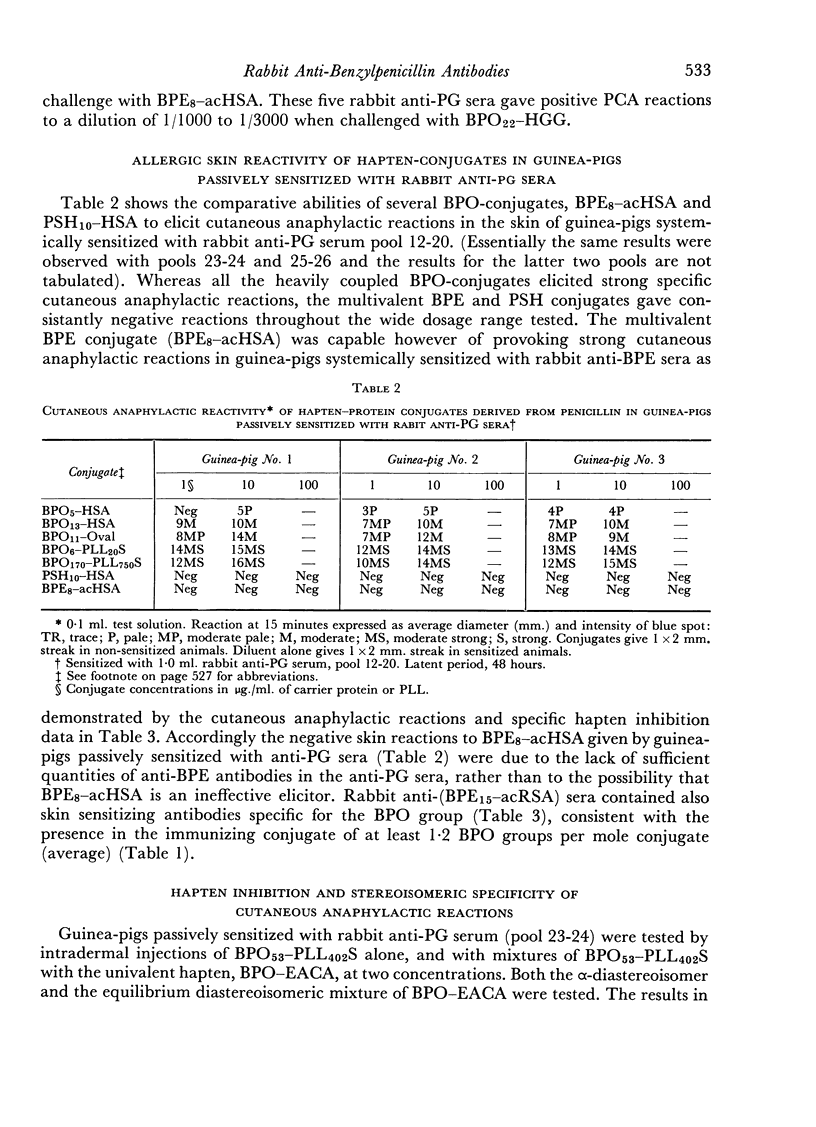
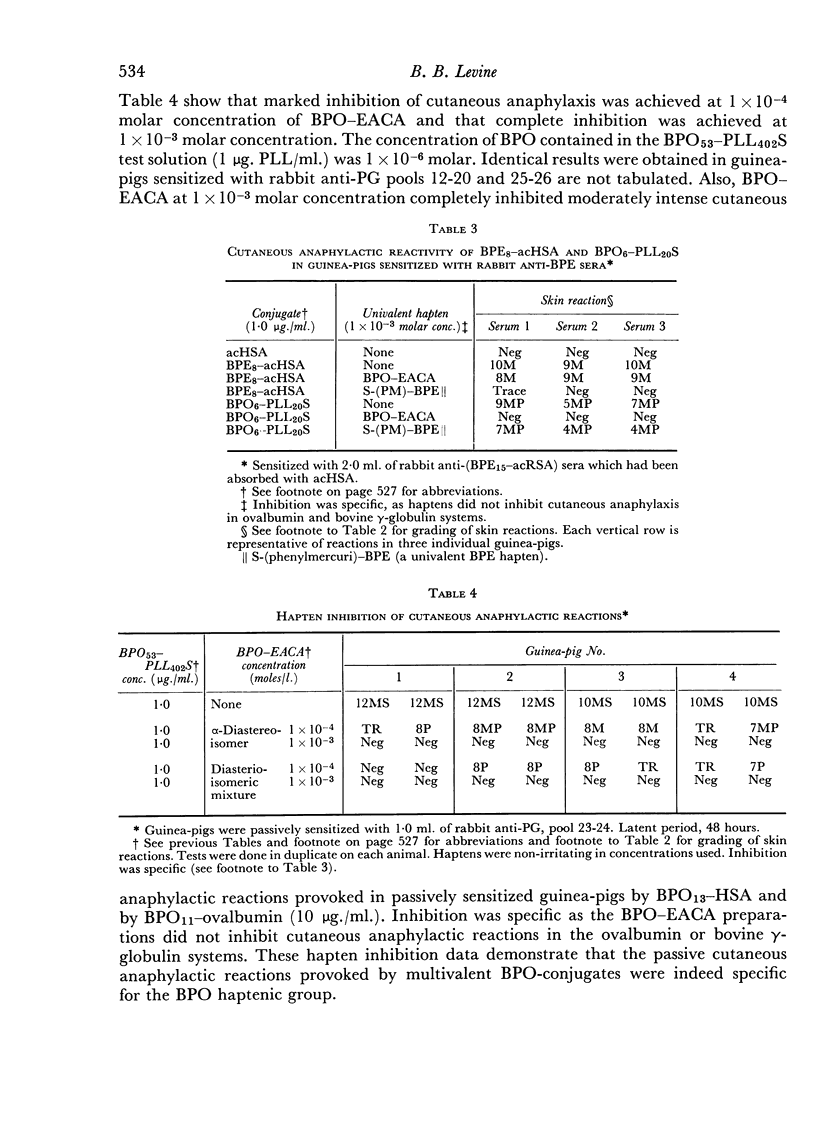
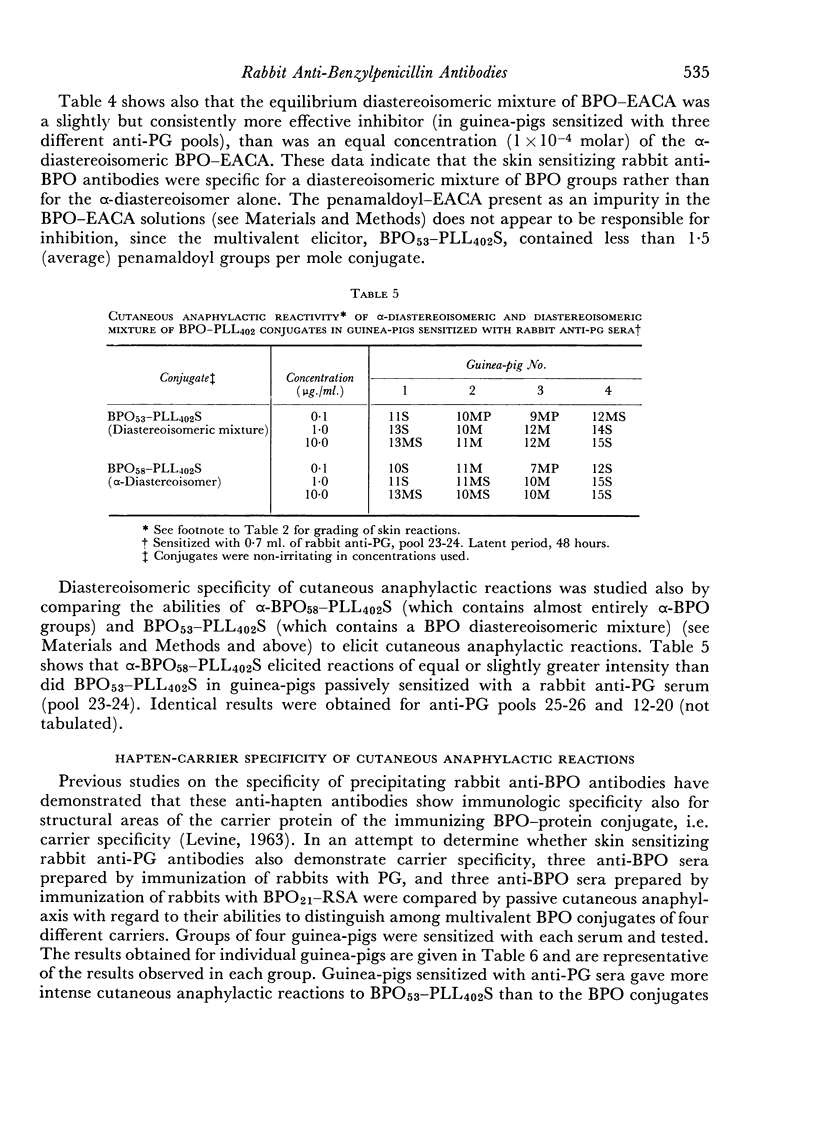


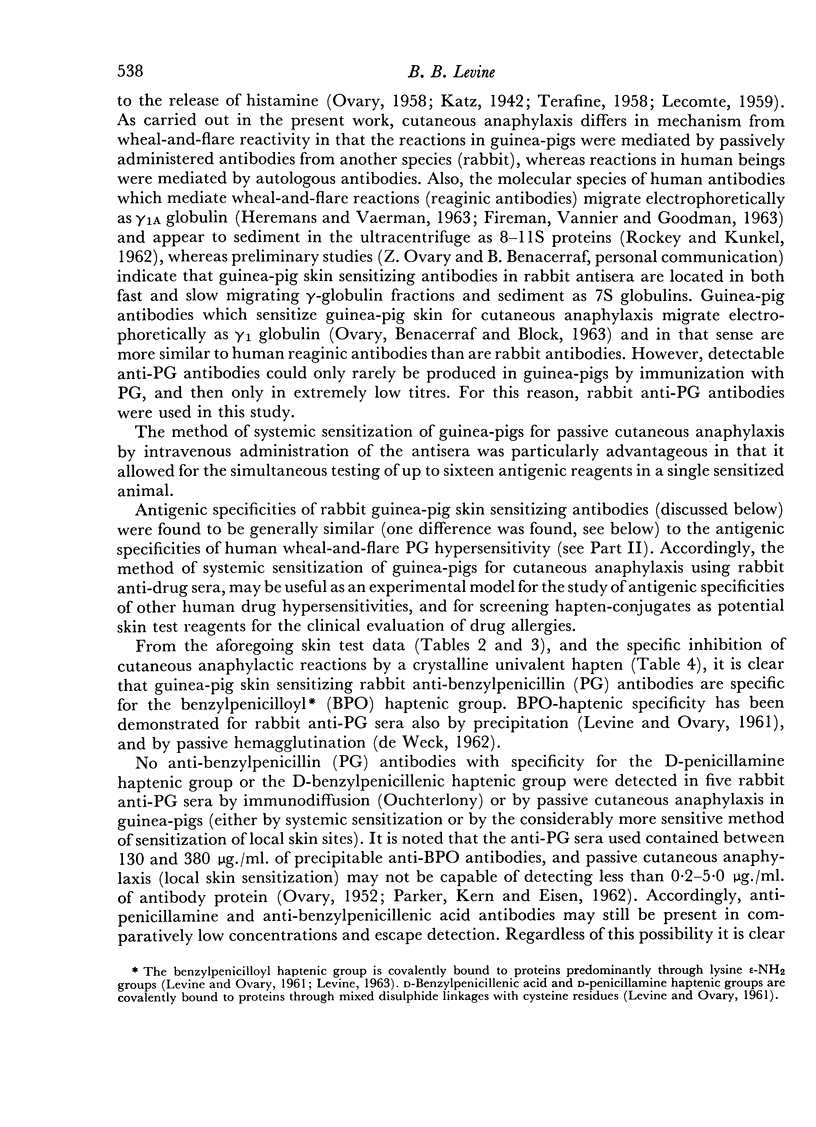
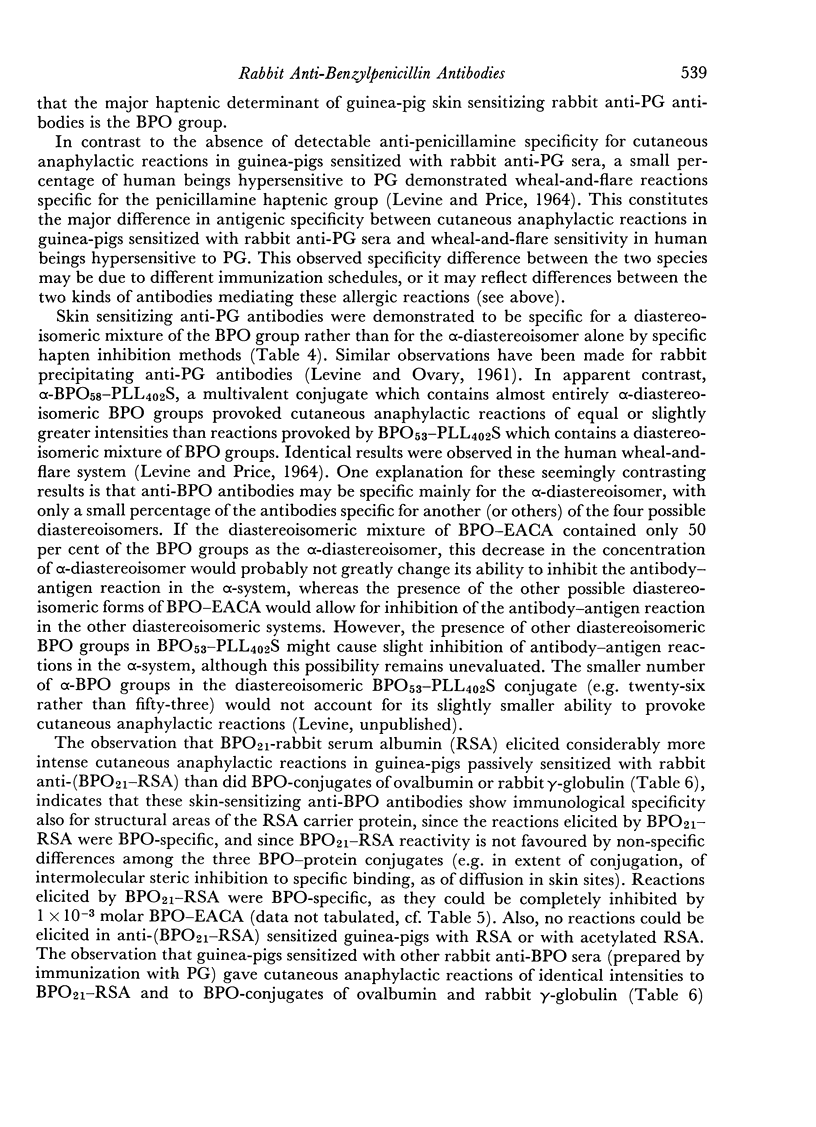
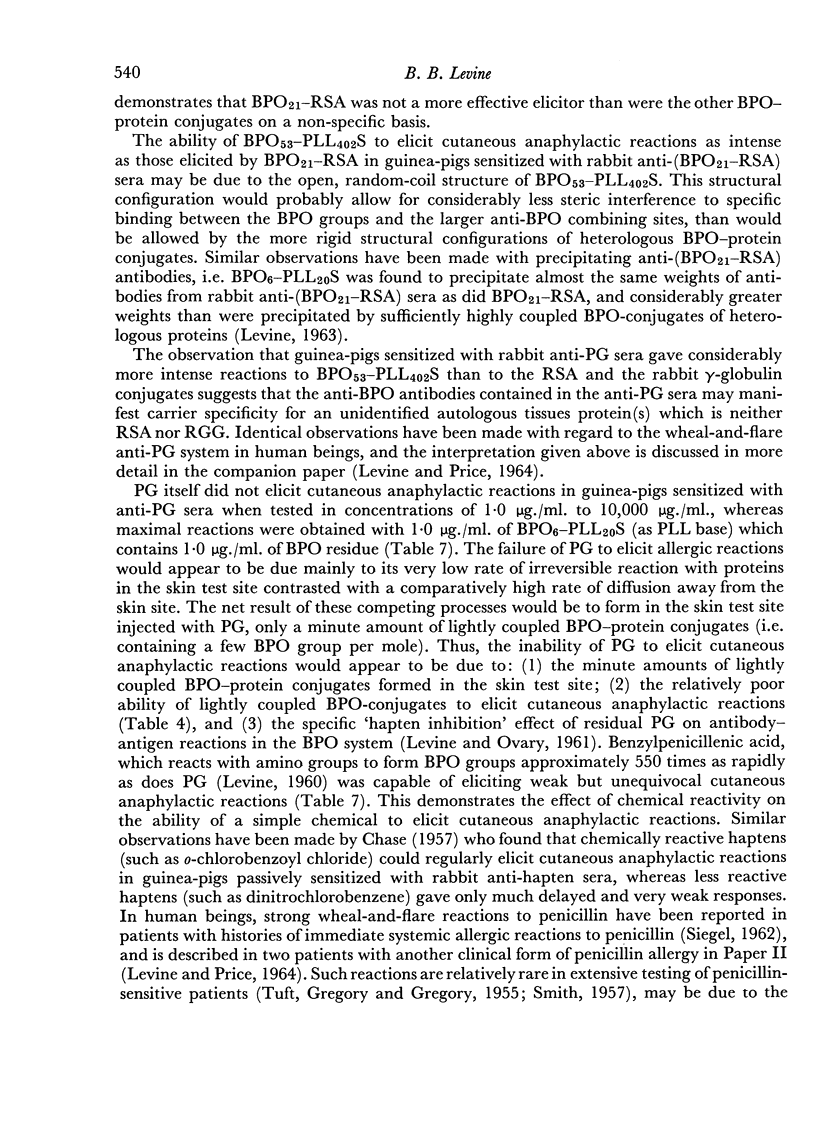
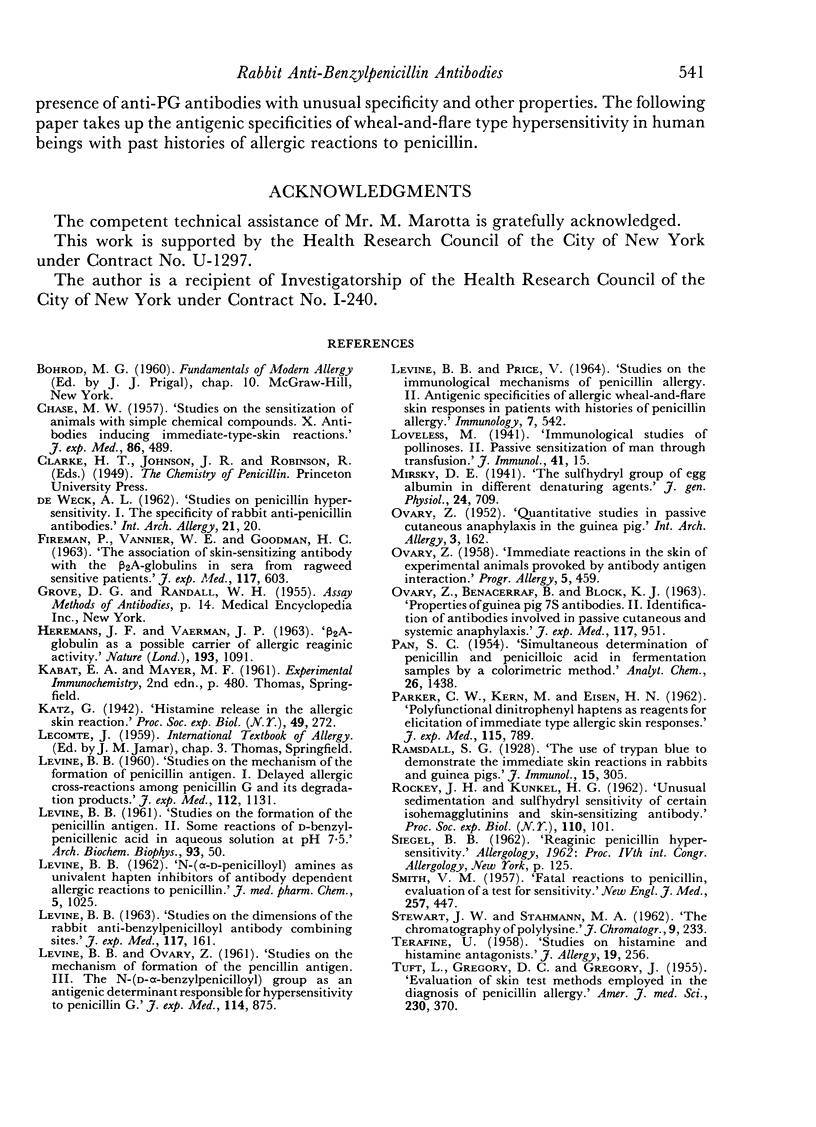
Selected References
These references are in PubMed. This may not be the complete list of references from this article.
- DE WECK A. L. Studies on penicillin hypersensitivity. I. The specificity of rabbit "anti-penicillin" antibodies. Int Arch Allergy Appl Immunol. 1962;21:20–37. doi: 10.1159/000229312. [DOI] [PubMed] [Google Scholar]
- FIREMAN P., VANNIER W. E., GOODMAN H. C. The association of skin-sensitizing antibody with the beta 2A-globulins in sera from ragweed-sensitive patients. J Exp Med. 1963 Apr 1;117:603–620. doi: 10.1084/jem.117.4.603. [DOI] [PMC free article] [PubMed] [Google Scholar]
- HEREMANS J. F., VAERMAN J. P. Beta-2A-Globulin as a possible carrier of allergic reaginic activity. Nature. 1962 Mar 17;193:1091–1092. doi: 10.1038/1931091b0. [DOI] [PubMed] [Google Scholar]
- LEVINE B. B. N(ALPHA-D-PENICILLOYL) AMINES AS UNIVALENT HAPTEN INHIBITORS OF ANTIBODYDEPENDENT ALLERGIC REACTIONS TO PENICILLIN. J Med Pharm Chem. 1962 Sep;91:1025–1034. doi: 10.1021/jm01240a016. [DOI] [PubMed] [Google Scholar]
- LEVINE B. B., OVARY Z. Studies on the mechanism of the formation of the penicillin antigen. III. The N-(D-alpha-benzylpenicilloyl) group as an antigenic determinant responsible for hypersensitivity to penicillin G. J Exp Med. 1961 Dec 1;114:875–904. doi: 10.1084/jem.114.6.875. [DOI] [PMC free article] [PubMed] [Google Scholar]
- LEVINE B. B., PRICE V. H. STUDIES ON THE IMMUNOLOGICAL MECHANISMS OF PENICILLIN ALLERGY. II. ANTIGENIC SPECIFICITIES OF ALLERGIC WHEAL-AND-FLARE SKIN RESPONSES IN PATIENTS WITH HISTORIES OF PENICILLIN ALLERGY. Immunology. 1964 Sep;7:542–556. [PMC free article] [PubMed] [Google Scholar]
- LEVINE B. B. Studies on the dimensions of the rabbit antibenzylpenicilloyl antibody-combing sites. J Exp Med. 1963 Jan 1;117:161–183. doi: 10.1084/jem.117.1.161. [DOI] [PMC free article] [PubMed] [Google Scholar]
- LEVINE B. B. Studies on the formation of the penicillin antigen. II. Some reactions of D-benzylpenicillenic acid in aqueous solution at pH 7.5. Arch Biochem Biophys. 1961 Apr;93:50–55. doi: 10.1016/0003-9861(61)90314-9. [DOI] [PubMed] [Google Scholar]
- LEVINE B. B. Studies on the mechanism of the formation of the penicillin antigen. I. Delayed allergic cross-reactions among penicillin G and its degradation products. J Exp Med. 1960 Dec 1;112:1131–1156. doi: 10.1084/jem.112.6.1131. [DOI] [PMC free article] [PubMed] [Google Scholar]
- OVARY Z., BENACERRAF B., BLOCH K. J. Properties of guinea pig 7S antibodies. II. Identification of antibodies involved in passive cutaneous and systemic anaphylaxis. J Exp Med. 1963 Jun 1;117:951–964. doi: 10.1084/jem.117.6.951. [DOI] [PMC free article] [PubMed] [Google Scholar]
- OVARY Z. Immediate reactions in the skin of experimental animals provoked by antibody-antigen interaction. Prog Allergy. 1958;5:459–508. [PubMed] [Google Scholar]
- OVARY Z. [Quantitative studies in passive cutaneous anaphylaxis of the guinea pig]. Int Arch Allergy Appl Immunol. 1952;3(2):162–174. doi: 10.1159/000227958. [DOI] [PubMed] [Google Scholar]
- PARKER C. W., KERN M., EISEN H. N. Polyfunctional dinitrophenyl haptens as reagents for elicitation of immediate type allergic skin responses. J Exp Med. 1962 Apr 1;115:789–801. doi: 10.1084/jem.115.4.789. [DOI] [PMC free article] [PubMed] [Google Scholar]
- ROCKEY J. H., KUNKEL H. G. Unusual sedimentation and sulfhydryl sensitivity of certain isohemagglutinins and skin-sensitizing antibody. Proc Soc Exp Biol Med. 1962 May;110:101–105. doi: 10.3181/00379727-110-27437. [DOI] [PubMed] [Google Scholar]
- STEWART J. W., STAHMANN M. A. The chromatography of polylysine. J Chromatogr. 1962 Oct;9:233–235. doi: 10.1016/s0021-9673(00)80766-9. [DOI] [PubMed] [Google Scholar]
- TUFT L., GREGORY D. C., GREGORY J. Evaluation of skin testing methods employed in the diagnosis of penicillin allergy. Am J Med Sci. 1955 Oct;230(4):370–379. doi: 10.1097/00000441-195510000-00002. [DOI] [PubMed] [Google Scholar]


